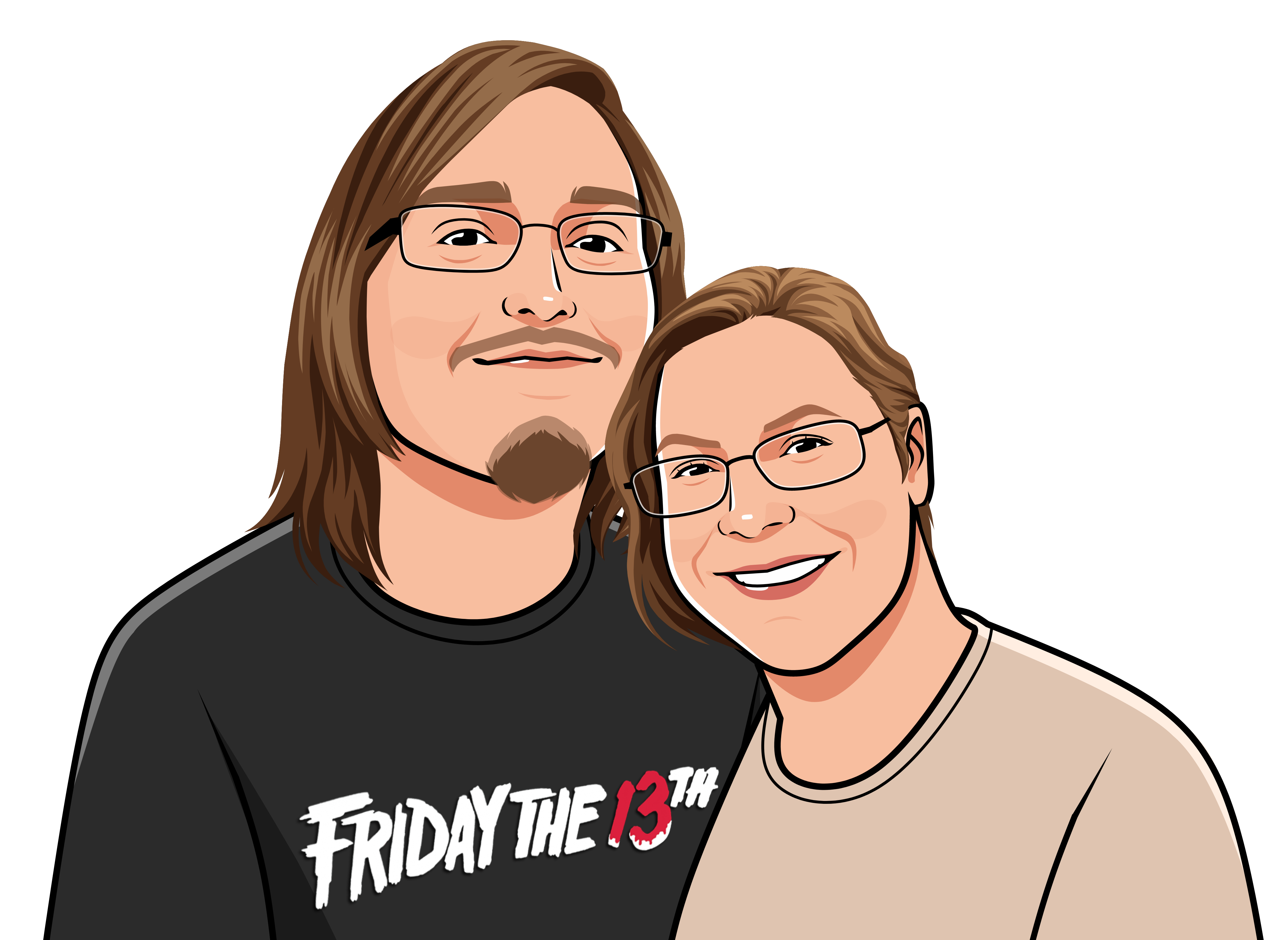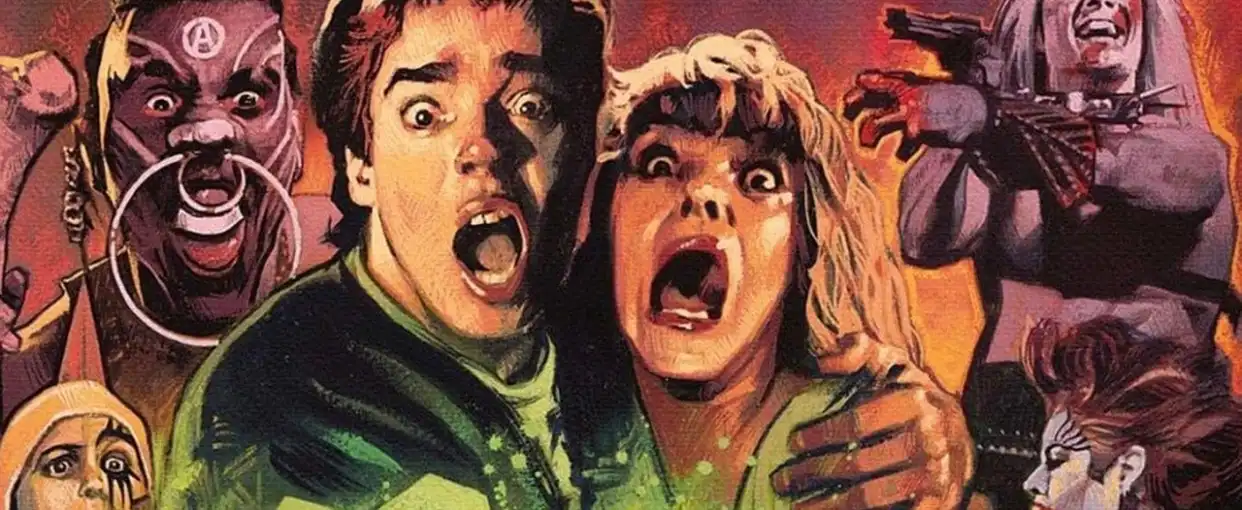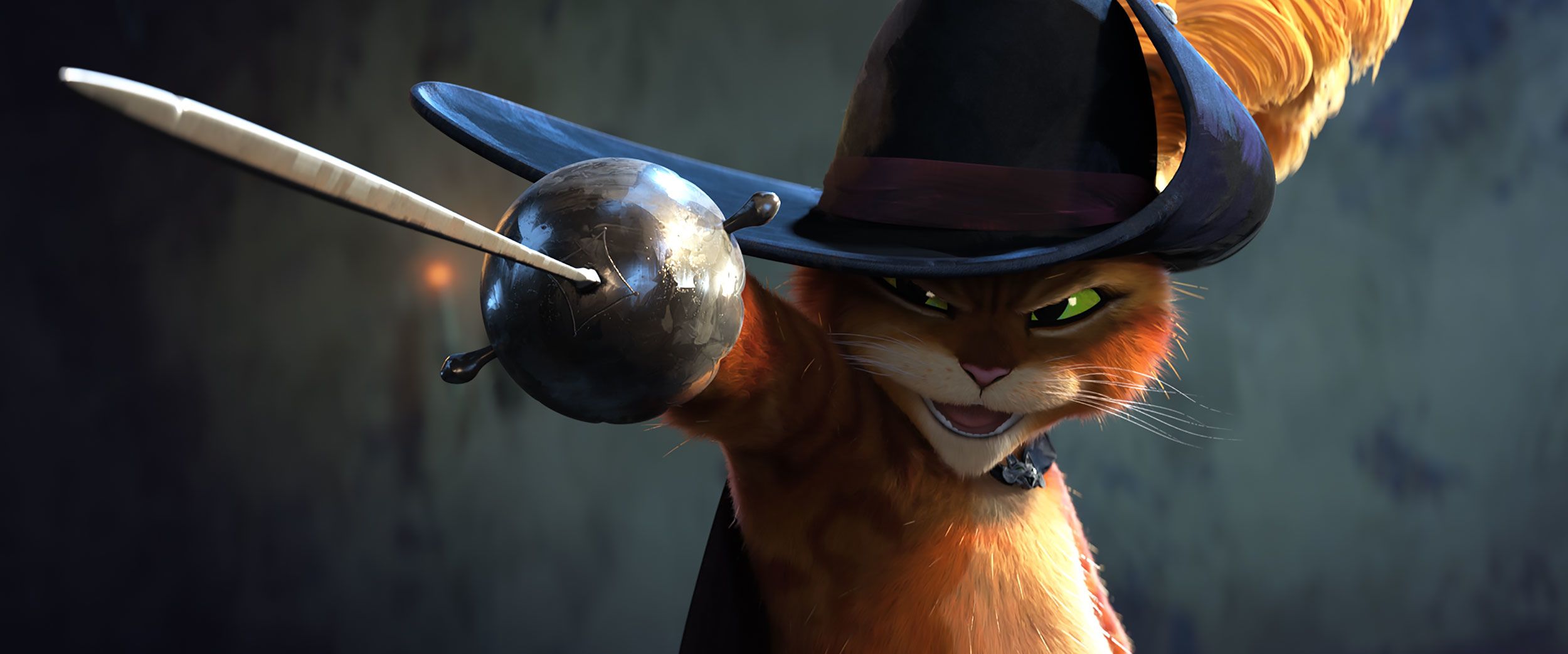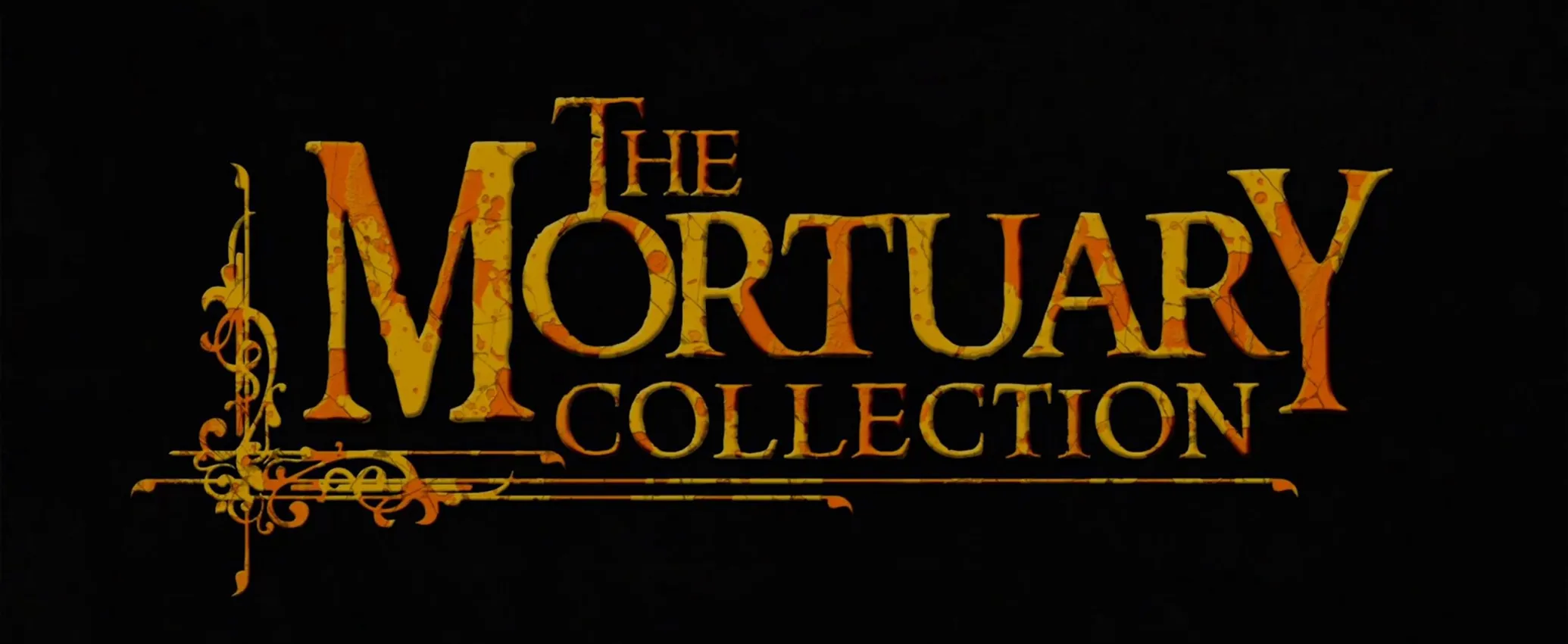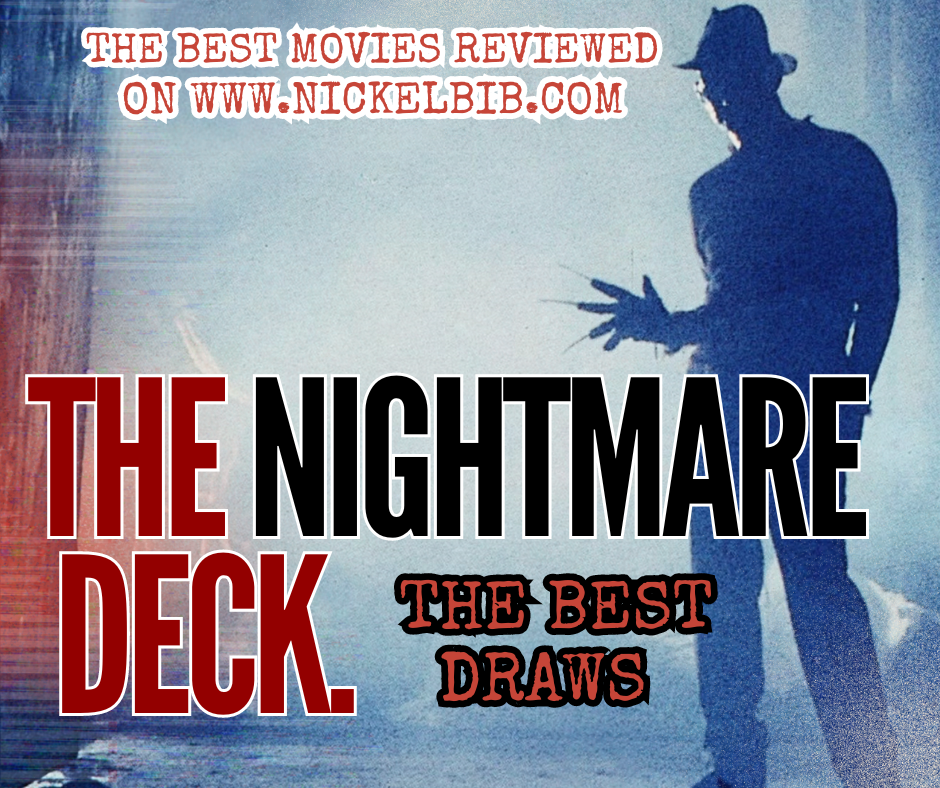First and foremost, I want to thank you for allowing us here at Niceklbib to crack your head open and see what’s inside (for lack of a more appropriate description). For those who may not be acquainted with you or your work, Eric England is a film director, producer, and screenwriter, with a filmography we hope to offer some inspection on. The film I want to talk about first is the horror film Madison County, released in 2011 in time for the Halloween season, following a group of college kids seeking out a true crime novelist for an interview, only to see their road-trip movie go slasher in a hurry. What context can you offer into this film heading in? For instance, how did the concept for Madison County come to exist?
Always happy to spill my guts and my brains! The concept for MADISON COUNTY came from the actual place itself. My grandfather lives there, in a small town of only a couple hundred people, and I had heard all of these outlaw tales from the area that I thought would be perfect for building a horror story around. At the time of making the film, I was between the ages of 20-22 and obsessed with movies like THE TEXAS CHAINSAW MASSACRE and had always dreamed of trying to make my own local-legend slasher film. This was my late adolescent attempt at that.
Whether it be Texas Chainsaw Massacre or House of 1,000 Corpses, something brings filmmakers and storytellers to the stretches of land at the countryside and forestry that engulfs it. What do you think allure is that makes it such an ideal setting for a horror film and the birthplace for so many antagonists in horror?
I believe it’s the seclusion and isolation that rural areas provide. There’s something visceral about the surroundings, probably all of the energy and life around you, but also something that feels familiar. Maybe the echoes of evolution? But when I’m in the wilderness, I feel compelled to confront myself and ponder my place in the universe. It’s a great space for introspection. And if you find that you’re not alone, and confronted by a deadly predator, you’re forced into a do-or-die situation, and there’s nothing more terrifying than that.
A lot of lower budget horror often drives into the skid, so-to-speak, by embracing it and trying for a grind-house or grainy quality. Madison County (as well as the other films we will discuss) has a very clean and picturesque production value to it. How important is the cinematography and aesthetic to your films?
I appreciate that. We were a film with a tiny budget, so first and foremost we wanted to make sure we didn’t look cheap. After that, I was pretty inspired by the early 00’s horror film remakes that brought a bit of a glossier aesthetic to some of the more gnarly classic horror stories. So films like THE TEXAS CHAIN SAW MASSACRE remake, THE HILLS HAVE EYES remake and THE LAST HOUSE ON THE LEFT remake were definitely points of reference when it came to the visuals. I believe that horror films are one of the best genres to showcase your personal vision or aesthetic. It’s really a director’s genre, allowing you to flex your stylistic sensibilities in creative ways. The only downside to that is that most horror films tend to be pretty low budget, so you have to make sure you have enough time and resources to execute that vision.
At a brisk hour and fourteen minutes, Madison County wraps itself up with a runtime short even for horror standards. In general, I admire that for a film, as I find a lot of horror might tend to overstay its welcome. However, for a feature film from a newer director, I know a lot of things might play a part in how a film is made. What you have done differently (if anything) now, looking back at it?
I would do everything differently! …Kidding. Kind of. Artists and creators grow and evolve overtime (hopefully getting better), so storytelling-wise, I would probably start from scratch. On the logistical end, I would definitely spend more time and energy on getting the schedule and budget in better shape. We were just kids when we made MADISON, so we had no idea what we were getting ourselves into. It was a bit of a guinea pig. And our production reflected that. It was challenging, clunky and just a lot more complicated than it had to be. But it made for a great education on how to do things better in the future.
Two years after Madison County, your next film was a horror called Roadside, which premiered in March 2013 and the CineMayhem Film Festival. Like Madison County, this film deals with madmen and killers, but in a very different angle. It tells the story of a husband and his pregnant wife who are on their way to spend holidays with the family. Everything changes when they find themselves held hostage by an unseen sniper whose sole intent seems to be emotional torment. What context can you offer about this and its development?
This film was conceived and executed pretty quickly after MADISON COUNTY because I just wanted to keep making movies. I didn’t want the train to stop, and I had read about how Robert Rodriguez made three films after EL MARIACHI so that he could blitz the marketplace and not pigeonhole himself into one particular genre. I thought that was a smart plan (and Robert’s career turned out great!), so I began mining my brain for ideas that would warrant a different, more traditional aesthetic and ideally be easier to shoot… The latter of which we didn’t accomplish. Shooting ROADSIDE was much, much harder than MADISON COUNTY.
One aspect that caught my attention straightaway was the inclusion of actors Ace Marrero and Katie Stegeman, who were also involved in Madison County. I like this because it not only allows you to see the improvement of the storyteller and the filmmaker, but the actors involved, as well. A lot of directors prefer a familiar cast, and how do you think yours guys’ rapport benefited this film?
Ace was engaged to Katie’s sister, so I kind of “joined the family”, so to speak, and really enjoyed collaborating with them at the time. Having them so close streamlined the writing and casting processes and allowed us to have a bit of a short-hand on set. When making low budget films, that’s a crucial advantage.
Madison County’s antagonist is more similar to that of a Leatherface baddie, a brute-type of threat dealt for the characters, whereas the smooth-talking antagonist seen in Roadside offers a calm cadence and sadistic satisfaction that brings to something like the callers in the Scream series. What is your thought process on shaping an antagonist and how does it differ from film to film?
SCREAM is one of my favorite films and was absolutely a reference to ROADSIDE, so I appreciate you picking up on that. I think the antagonist has to fit the story. With MADISON COUNTY, I wanted Damien to feel like a deranged hillbilly whose only motive for killing was “protect what’s yours”. The Gunman in ROADSIDE was to be a bit more calculated and mysterious. I think for me he reflected the fear of domestic terrorism and the senseless violence we’ve been witnessing in our culture.
Roadside mostly focuses on the back in fourth dialogue between a small handful of characters and a single-location. What challenges did you have to face against for the film, and did those challenges draw you in to the concept?
At first, the challenges were exciting, but by the end of the film, they were dreadful. Shooting at night on a low budget was probably the biggest challenge. Having to light so much area with only so many lights and only so much power (our generator actually ran out of fuel in the middle of shooting one night and it was a 45 minute turn around just to get gas). Being constrained to one location is deceptively simple, but made for massive challenges in keeping things interesting, fresh and cohesive. It did benefit us in not having to move too many times during the course of production, and if we needed to go back and get something we missed, it was readily available. But there’s always two sides to every coin, so the pros came with equal cons.
The same year Roadside, was released, your body-horror film Contracted, was released at the Neuchâtel International Fantastic Film Festival and later procured distribution through IFC Films. Contracted was likely the first film directed by you that I ever came across, while perusing IFC’s considerable catalog of features. The film follows a woman who is raped at a party and finds herself dealing with very unusual symptoms. The film has certain aspects about it that could be seen and interpreted as a commentary on sexuality and sexually-transmitted diseases, is that something you set out to do when developing this film? And why do you believe sexuality is such a prevalent topic in many horror films?
It was definitely on my mind while developing the idea, but I didn’t set out to make a social or political statement on anything. First and foremost, I wanted to tell a story that I thought would connect with audiences on a visceral level. I think that’s why sex is often seen in horror films; sex and death are the recipe for human existence, and therefore, potent elements of fear.
This film, especially, deals with heavy subject-matter such as sexual assault and self-deception. How was your approach when dealing with the themes that it involved?
I wanted to approach them from as realistic and neutral a standpoint as a I could. The perspective of CONTRACTED is primarily told through the subjective experience of Samantha, so I felt that counter-balancing that with a very objective narrative would allow for the conflict to unfold naturally over time as she reacted to the disease that consumes her. The subject matter is obviously sensitive and traumatic, but so is the human experience. As the Buddhists say, life consists of suffering, pain and misery. So to tame or exploit any elements too much felt disingenuous. But at the end of the day it’s a horror movie, so liberties had to be taken.
As I fiction writer myself, I oftentimes deal with content that can best be described as sensitive or even offensive, however, I try my best to be sincere from a character standpoint and without malice from a writer’s. I never write to offend, instead, I write to show other perspectives in the human condition. Regardless, I know that if the wrong person is exposed to my work, they might not be considerate of what I wanted to accomplish. Or, in other words, they might not “get it”. Is that ever a concern for you with writing on touchy subjects and do you feel anyone has ever misread something you’ve created?
Absolutely. I believe it’s an inevitable part of the process, and I think it’s always a concern you have as a storyteller. It’s your job as the writer to communicate your story as clearly as you can, and the audience has a certain amount of faith and trust in you while doing that. It’s paramount not to betray that. I was 24 when I made CONTRACTED and had only been making movies for around 2 years, so I was still very early in the process of discovering who I was as a person and as a filmmaker, not to mention just beginning to understand the basics of the movie business and storytelling in general. So there’s a lot in this film that I would re-write or handle differently. But at the time, I was trying to do the best I could with what I knew.
The experience of making CONTRACTED taught me that being a filmmaker comes with a certain amount of responsibility — especially when your film connects with a wide audience. The viewer will always interpret the story through their own lens of life and experiences and assign meaning to things you may not have assigned meaning to, projecting their own assumptions and opinions onto the author’s subconscious. And I think that forces you to be more mindful of your subject matter and its treatment moving forward.
Contracted had a sequel released in 2015, but, whereas Contracted had been written and directed by you, Contracted: Phase II saw less involvement on your end. What circumstances led to you not being involved in the sequel?
It was just a classic case of business and creative not lining up. I wanted to do something that was a bit more expensive and complex than what the producers wanted to do, and since IFC was excited about a sequel moving forward pretty quickly, I saw that things weren’t going to work out. I had originally planned to oversee the sequel and was excited to do so, but egos got involved (mine included, which I regret) and I was already in production on my next film, so I ultimately decided to just step away.
Directors like John Carpenter and writers like Stephen King, they see their stories adapted and sequels produced without their involvement. Although I haven’t yet watched Contracted: Phase II, I was curious on whether you’re concerned at all or apprehensive about others “taking your baby,” so to speak. For instance, if you were to direct Hellraiser, and you were Clive Barker, would you be bothered by a film twenty-something years later with your brand attached to it receiving a negative reception?
Ironically, at one point, I was asked to come in and pitch for both HELLRAISER and HALLOWEEN when they were still at Dimension. At first I was definitely upset, and wanted to have full creative control, but I was young. I think John Carpenter has a pretty healthy attitude toward the matter; as long as you’re being compensated fairly, there’s really nothing to get too bent out of shape about. Change is inevitable and you can’t control your reputation or legacy forever. Hell, there’s very little control you have over the way audiences and people in general perceive you anyway. So it boils down to how much of a control freak you want to be. And in my experience, learning to let things evolve organically and not be too precious about the creative process is the best way to not lose your mind.
After 2013’s release of Contracted and Roadside, it wasn’t until 2017 that your next film saw the light of day, how was your time spent in-between those years and where does the development of your comedy crime thriller Get the Girl fit into that?
ROADSIDE was actually shot before CONTRACTED but released after. And GET THE GIRL was shot at the end of 2014 but didn’t release until the beginning of 2017 due to distribution challenges and scheduling. After CONTRACTED, I was extremely hesitant to do another horror film, especially a low-budget one. I didn’t want to get trapped in that box, so I was looking to do things that were outside the expectations people had of me and show that I could do things other than just gross audiences out. GET THE GIRL was an opportunity to work with new collaborators (in front of and behind the camera) and play with different genres and tones. I don’t know that it was the right project for me to do next, but it was another opportunity and a great learning experience.
However, between CONTRACTED and GET THE GIRL, I was still working on various bigger-budget horror films that unfortunately didn’t make it to camera. And then I began working on JOSIE in 2016, so I stayed pretty busy.
Get the Girl is more comedy-thriller than horror, although it certainly has an off-kilter horror-adjacency to it. Something I noticed about this film was the way it turned a familiar concept on its head. Get the Girl follows a young man that buys the guidance of another man to help him reel in a girl he likes, a la Hitch. Everything takes a turn when that other man kidnaps him and that girl and begins a faux hostage situation. The twists and turns are fast and frequent in this film, with a very attention-detailed script, what was your mindset developing this film?
I just wanted to do something more comedic but still dark. I thought it would be fun to tackle the cliched romantic comedy tropes and spin them on their head, with a bit of my own personal dark humor added in. There’s definitely a salt-and-peppering of horror in the mix as well, which was planned — but the goal was to focus on branching out of “true horror” with witty dialogue, a more complex story and a bit of a bigger, glossier aesthetic.
At a point, does it feel like Clarence becomes less a Romeo and more a Dahmer?
That was the goal, but I don’t know if I nailed it in the end. Some of the more sensitive elements are a bit clumsy and come off as problematic, but that wasn’t the intention. The production had to be rushed a bit due to budgetary and scheduling restrictions, so I wasn’t able to control the tone as much as I originally had planned to. And being that I was still a young filmmaker, I was uncertain of how much to lean into how creepy Clarence truly was — especially from a sales and distribution standpoint. But the story was absolutely meant to be a satire and poke fun at the “heroic male” and “damsel in distress” archetypes. I like to view the 2nd half of the film as a bit of a fever dream, where Clarence is fantasizing about himself as more of a hero than he actually is. I wish I would have leaned into that more in the visual telling of the story, but it’s still a fun and twisted little movie.
You mentioned Robert Rodriguez, and that’s a film director I have noticed comes up a lot in the interviews on Nickelbib, would you say his films are among the ones that influenced you the most? What does your Mount Rushmore of Horror and genre film making look like?
His films definitely stood out to me as a young, aspiring filmmaker. They’re fun and entertaining, and the stories behind them are sometimes as interesting as the films themselves. And I would have to say that my Mt. Rushmore of Genre filmmakers would be: Alfred Hitchcock, Wes Craven, John Carpenter and James Wan.
In February 2018, your most recent film Josie premiered at the Mammoth Film Festival prior to a home-video release in March by Screen Media Films. I don’t know what’s cooler about the film, the fact Sophie Turner was brought onboard for the project, or the fact the English actress from Game of Thrones and X-Men fame brought with her a Southern accent. How did the actress become involved in the project, I understand that another actress was previously attached to the role?
That’s correct. The incredible Anya Taylor-Joy was originally attached to play Josie when the film was titled HUNTSVILLE. Unfortunately, her schedule just became too busy after the success of THE WITCH, and we weren’t able to get into production fast enough to keep her. But fortunately for us, Sophie Turner had read the script in between shooting seasons of GAME OF THRONES, and she loved it. Her agent got in touch with us, and I loved the idea of her playing Josie, so we met up and hit it off immediately. We agreed to make the movie right there on the spot, and thankfully we were able to move things along quickly enough to keep her. She was a blast to work with and is just an all around amazing person. I’m very proud of the work we did together.
Sophie is, of course, not the only familiar face involved with the film, with names like Dylan McDermott and Jack Kilmer. Obviously, this isn’t to dismiss anyone else you’d worked with, but how does shooting a film at the scale of Josie compare to shooting a film like Madison County years only a few years prior?
It was a completely different process from anything I had experienced prior. MADISON COUNTY was shot on my Grandfather’s farm, in complete isolation with a bunch of my film school buddies and local filmmakers from Arkansas. On this, we dealt with A-list companies, agents and even paparazzi — just a lot of the additional hoops that come along with making “Hollywood” movies. Obviously the budget was bigger which allowed us the resources to hire a more experienced cast and crew, which brought a lot of talent and wisdom to the project. It was an extremely collaborative process with a lot more people involved.
Unlike any of your previous films we discussed, Josie was written by Anthony Ragnone II, how was your approach to directing the film different than a film you’d written the screenplay for yourself?
It honestly wasn’t as different as I thought it would be from a directing standpoint. I made sure that Anthony was included in every part of the process, and we had so many discussions about the script that by the time we were making the film, it felt like we had written it together. I was always respectful of him being the original author, and we had a wonderful collaboration between us. It was nice having another brain to bounce challenges and solutions off of, especially when we had to adjust dialogue on set.
Josie is more thriller than straightforward horror, following a local recluse named Hank and a mysterious high school student who comes to town. Their relationship, at best, tempers the line between appropriate and inappropriate, and the story is mostly based on the oddities surrounding their relationship with each other. What would you say was trying to be conveyed most in this film?
Part of the reason I wanted to make this film was because Anthony wasn’t trying to make any social or political statements with the script. And I didn’t have much interest in doing so either. We wanted to approach it like a classic film, from the days before every movie had to smuggle some underlying moral subtext or commentary inside it. This story was strictly about the characters and their actions and consequences. It was a slice-of-life piece. And a taboo one at that. There was something timeless about that that I really liked.
Although Josie isn’t associated, the Southern set is enough to draw the connection. Your films Madison County, Contracted, and Roadside all feature a credit to your company Southern Fried Films. Clearly, you felt attached enough to pay homage to it on some level, but what exactly does it mean to you to be “Southern Fried,” and how does that background influence your films?
Growing up anywhere, you can’t help but soak up some of the influences of your surroundings. Having moved to LA at 19, it’s as if I was born and raised in Arkansas but grew up in Los Angeles. Coming from the South, I’ve always noticed that there’s a bit more of a straight-forward nature down there. People are honest, careful and resourceful — hardworking, but not in a “hustle culture” kind of way like you find in more metropolitan areas. There’s a simplicity to life and an appreciation for the little things. But there’s also a sensitivity and hesitancy toward things that go against the norm. It’s a unique combination of love and fear, and that duality is something I find interesting.
I think that’s why I’m drawn to darker and more taboo subject matter. I was raised in a pretty religious area, in a pretty religious household, which inevitably shaped the way I view the world. It’s interesting to me that the South is known for “comfort food”, or “soul food”, which is good for your soul — but usually bad for your health. Again, duality. I think that the perspective I bring to any story is a mixture of that light and darkness that I observed during my formative years.
Thank you very much for speaking with us! And now, if you have anything else you want to talk about, a project you want to plug, or something you’re working on, you now have the chance to do so!
My pleasure! Right now, I’m just surviving the Coronavirus and being grateful to be alive like the rest of us. But I’m writing some new stories that I’m excited to share with the world when they’re ready.

